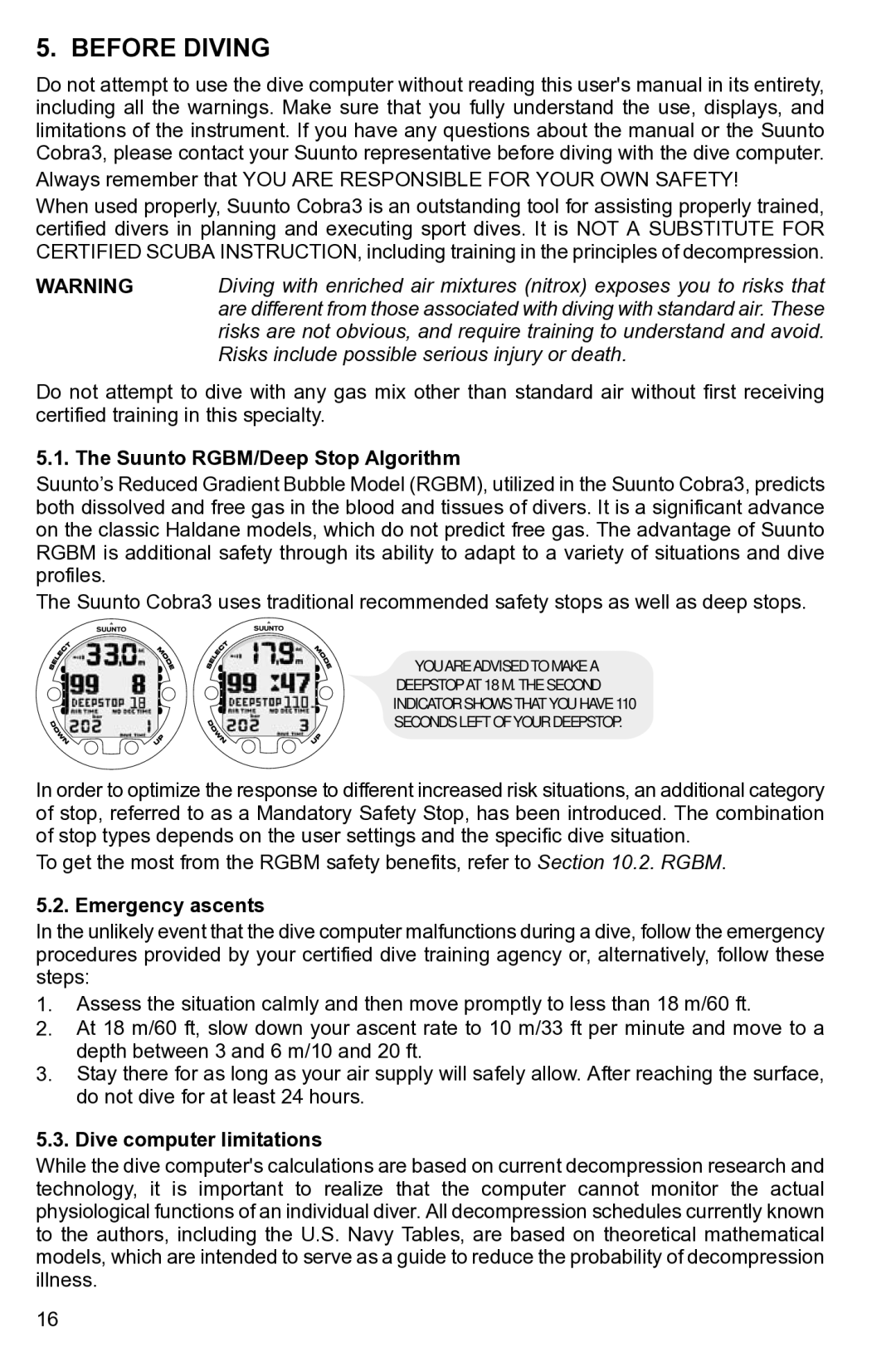
5. BEFORE DIVING
Do not attempt to use the dive computer without reading this user's manual in its entirety, including all the warnings. Make sure that you fully understand the use, displays, and limitations of the instrument. If you have any questions about the manual or the Suunto Cobra3, please contact your Suunto representative before diving with the dive computer. Always remember that YOU ARE RESPONSIBLE FOR YOUR OWN SAFETY!
When used properly, Suunto Cobra3 is an outstanding tool for assisting properly trained, certified divers in planning and executing sport dives. It is NOT A SUBSTITUTE FOR CERTIFIED SCUBA INSTRUCTION, including training in the principles of decompression.
WARNING Diving with enriched air mixtures (nitrox) exposes you to risks that are different from those associated with diving with standard air. These risks are not obvious, and require training to understand and avoid. Risks include possible serious injury or death.
Do not attempt to dive with any gas mix other than standard air without first receiving certified training in this specialty.
5.1. The Suunto RGBM/Deep Stop Algorithm
Suunto’s Reduced Gradient Bubble Model (RGBM), utilized in the Suunto Cobra3, predicts both dissolved and free gas in the blood and tissues of divers. It is a significant advance on the classic Haldane models, which do not predict free gas. The advantage of Suunto RGBM is additional safety through its ability to adapt to a variety of situations and dive profiles.
The Suunto Cobra3 uses traditional recommended safety stops as well as deep stops.
YOU ARE ADVISED TO MAKE A
DEEPSTOP AT 18 M. THE SECOND
INDICATOR SHOWS THAT YOU HAVE 110
SECONDS LEFT OF YOUR DEEPSTOP.
In order to optimize the response to different increased risk situations, an additional category of stop, referred to as a Mandatory Safety Stop, has been introduced. The combination of stop types depends on the user settings and the specific dive situation.
To get the most from the RGBM safety benefits, refer to Section 10.2. RGBM.
5.2. Emergency ascents
In the unlikely event that the dive computer malfunctions during a dive, follow the emergency procedures provided by your certified dive training agency or, alternatively, follow these steps:
1.Assess the situation calmly and then move promptly to less than 18 m/60 ft.
2.At 18 m/60 ft, slow down your ascent rate to 10 m/33 ft per minute and move to a depth between 3 and 6 m/10 and 20 ft.
3.Stay there for as long as your air supply will safely allow. After reaching the surface, do not dive for at least 24 hours.
5.3. Dive computer limitations
While the dive computer's calculations are based on current decompression research and technology, it is important to realize that the computer cannot monitor the actual physiological functions of an individual diver. All decompression schedules currently known to the authors, including the U.S. Navy Tables, are based on theoretical mathematical models, which are intended to serve as a guide to reduce the probability of decompression illness.
16
